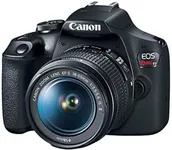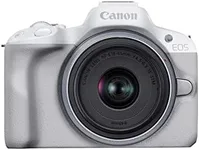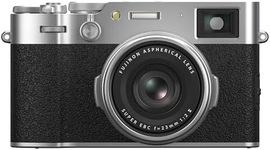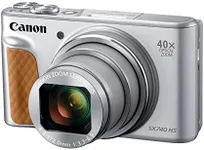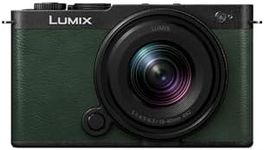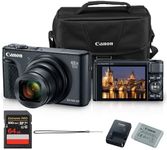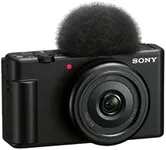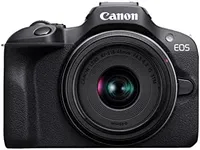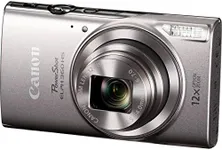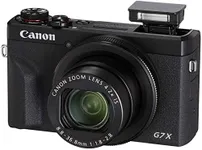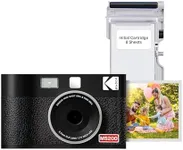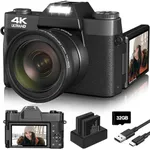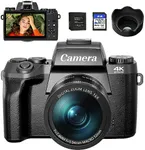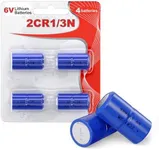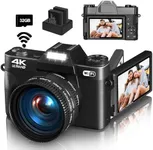Buying Guide for the Best Digital Camera With Wifi
Choosing the right digital camera with WiFi can be a rewarding experience if you know what to look for. The key is to understand your needs and how different specifications can meet those needs. Whether you're a beginner or an experienced photographer, focusing on the right specs will help you find a camera that suits your style and requirements.Resolution (Megapixels)Resolution, measured in megapixels (MP), indicates the amount of detail a camera can capture. Higher megapixels mean more detail, which is important for large prints or cropping images without losing quality. For casual photography, 12-20 MP is usually sufficient. For professional use or large prints, look for cameras with 20 MP or more. Consider your end use: if you mostly share photos online, a lower MP camera will suffice, but for detailed prints, higher MP is better.
Sensor SizeThe sensor size affects image quality, especially in low light conditions. Larger sensors capture more light and detail, resulting in better image quality. Common sensor sizes include Full Frame, APS-C, and Micro Four Thirds. Full Frame sensors offer the best quality but are usually found in more expensive cameras. APS-C sensors are a good middle ground, offering decent quality at a more affordable price. Micro Four Thirds sensors are smaller but still provide good quality for everyday use. Choose based on your need for image quality and budget.
WiFi ConnectivityWiFi connectivity allows you to transfer photos and videos wirelessly to your smartphone, tablet, or computer. This is convenient for quick sharing on social media or cloud storage. Some cameras also offer remote control features via WiFi, letting you control the camera from your smartphone. Look for cameras with easy-to-use WiFi features and good app support. If you frequently share photos online or want to control your camera remotely, WiFi is a valuable feature.
Lens CompatibilityLens compatibility determines the range of lenses you can use with your camera. Interchangeable lens cameras (like DSLRs and mirrorless cameras) offer more flexibility and creative control. Fixed lens cameras are simpler and more compact but limit your ability to change lenses. If you want versatility and plan to experiment with different types of photography, choose a camera with a wide range of compatible lenses. For simplicity and ease of use, a fixed lens camera might be better.
Image StabilizationImage stabilization helps reduce blur caused by camera shake, especially in low light or when using a long zoom. There are two types: optical and digital. Optical stabilization is generally more effective and is built into the lens or camera body. Digital stabilization is done through software and is less effective. If you often shoot in low light or without a tripod, look for cameras with good optical stabilization. For casual use, digital stabilization may be sufficient.
Video CapabilitiesIf you plan to shoot videos, consider the camera's video capabilities. Look for resolution (Full HD, 4K), frame rates, and additional features like slow motion or time-lapse. Higher resolution and frame rates provide better video quality and more creative options. For casual video recording, Full HD (1080p) is usually enough. For professional or high-quality videos, look for 4K resolution and higher frame rates. Consider your video needs and choose a camera that meets them.
Battery LifeBattery life is crucial, especially if you plan to use the camera for extended periods or in situations where recharging is not possible. Battery life is usually measured in the number of shots per charge. Cameras with longer battery life are more convenient and reduce the need to carry extra batteries. If you often shoot for long sessions or travel frequently, look for cameras with good battery life. For occasional use, shorter battery life may be acceptable.
Build Quality and ErgonomicsBuild quality and ergonomics affect how comfortable and durable the camera is. Look for cameras with a solid build, weather sealing, and a comfortable grip. Ergonomics are important for ease of use, especially during long shooting sessions. If you plan to use the camera in various environments or for extended periods, prioritize build quality and ergonomics. For casual use, a lighter and more compact camera may be more convenient.
